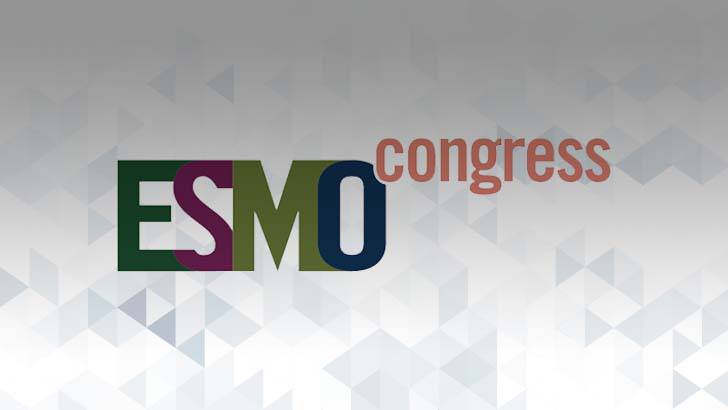Here’s a recap of a session from the 2021 European Society for Medical Oncology (ESMO) Congress exploring how we can use technology and data to support the patient care journey.
Amid the adoption of telehealth and other technological advancements, day 4 of the European Society for Medical Oncology (ESMO) Congress featured the “How Can Technology & Data Support the Cancer Patient Journey?” session, which included the following five presentations that each tackled a unique angle of this issue.
The Importance of Patient Involvement in Designing Patient-Centric Clinical Trials
Up first was patient advocate Ms. Gilliosa Spurrier-Bernard from France. After her husband was diagnosed with metastatic melanoma, she saw firsthand what it was like to select and participate in clinical trials. From that experience, she came to appreciate patient-centric trials, or trials that are designed in a way to benefit both patients who are participating in the trial as well as those who are not.
To help increase the awareness and prevalence of patient-centric trials, she founded Melanoma Patient Network Europe, an organization that’s dedicated to consulting on clinical trial designs and contributing to trials in academia.
And while precision medicine, patient data requirements, and COVID-19 have all disrupted trial design and implementation, Ms. Spurrier-Bernard believes bringing patient experts and advocates in on those discussions early can have the most impact on the patient community.
National Patient Data Protected with Blockchain
Next up was Ms. Piret Hirv, a nurse from Estonia who discussed how they’re delivering e-health. In Estonia, every patient is given a unique ID code, similar to a social security number, that gives them access to an e-health system. Clinicians and hospitals can also access this system, and using a patient’s ID code, they can view old electronic health records and record new data.
Since this system is available online, security and confidentiality are big considerations. To meet internal, external, and regulatory requirements and to ensure the integrity of the data, the system uses a blockchain system to track who has changed data and when.
This enables clinicians and patients alike to enjoy the benefits of an e-health system while ensuring the data is up to date, accurate, and not corrupted.
AI, Targeted Data, & Predictive Analytics to Monitor & Proactively Manage Patient Outcomes & Validate the Quality & Benefit of Cancer Care
Professor Mozziyar Etemadi from Chicago then discussed how computers may be applied to cancer screening. Currently, radiologists use representations such as the number and size of nodules to determine if patients have cancer, but with recent technological advancements, many wonder if a computer can do the same thing.
To find out, a recent study trained a computer on 42,290 lung cancer scan examples, and it performed as well as humans. In fact, there were 11 percent fewer false positives and 5 percent fewer false negatives. Another similar study focused on mammography and trained a computer on 121,455 examples. Once again, the computer performed as well as humans, and there were 5.7 percent fewer false positives and 9.4 percent fewer false negatives.
Despite these promising results, however, Professor Etemadi noted the following limitations of this technology:
- It only tells you if a patient has cancer
- It requires a lot of data to perform well
- It’s limited by human factors, such as the dataset and the design of the multiple-choice test
Despite these limitations, Professor Etemadi recommends continuing the testing of this technology by integrating it into clinical workflows, validating it prospectively on brand new data, and replicating the process in parallel for many diseases.
How Patients Can Support the Qualitative Empirical Data & Strengthen Cancer Health Research
Led by cancer survivor Mr. Jan Geissler, the fourth presentation focused on what researchers and institutions can learn from the patient community, which—as Mr. Geissler knows firsthand—has unique insights into the day-to-day reality of living with cancer. Because of this, there’s been an increase in patient involvement in clinical trial development when it comes to research priorities, design, conduct, market authorization, and post-approval.
Mr. Geissler then quoted disease mapping, patient preferences, and inequality mapping as examples of community-generated evidence that has helped informed the following:
- Translational research
- Clinical cancer research
- Regulatory decisions
- Access and reimbursement
- Healthcare system organization and cancer care provisioning
- Individual treatment choices
Not only are patient organizations consultants and advocates, but they’re also working to ensure the lawful use of data, which is why Mr. Geissler stresses the importance of acknowledging that patients can be partners and drivers of empirical data.
OneRemission: An Integrative Oncologist in Your Pocket
Rounding out the discussion was software engineer and cancer survivor Mr. Misha Tyulenev from Estonia. Although staying in remission is important, it can be difficult for survivors like Mr. Tyulenev to know how to stay in remission due to the following three issues:
- Access to integrative medicine is limited
- Most search engines return non-relevant resources
- Existing apps are generic
After facing these challenges firsthand, Mr. Tyulenev founded OneRemission to empower cancer survivors to remain in remission. It currently offers a search engine that provides results that are much more relevant and less controversial.
OneRemission also has an app that features a Q&A function as well as a lifestyle tracker that can analyze a patient’s various activities, such as nutrition, sleep, exercise, and more. Mr. Tyulenev will continue work on the app to make it even more personalized, with the goal of turning the OneRemission app into an integrative oncologist that’s available in a patient’s pocket.
Between e-health systems and artificial intelligence, this session highlighted just a few of the many advancements aimed at improving the cancer patient journey, and as technology continues to advance, so too will the resources that are available to both oncologists and patients.

Facebook Comments